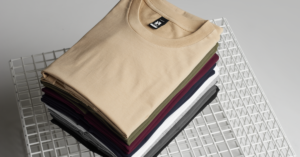In a previous blog post, I mentioned that Garment Printing would be attending this year’s FESPA event. At the event, we’ll be giving a presentation on 3D printing and what this means for the clothing industry and the future of T-Shirt printing. I also mentioned that we’d be released some blog posts with breakdowns of our presentations for those who can’t attend this year’s event.
So, as promised, today I’m going to take a look at 3D printing and discuss what it is and what 3D printing can currently achieve.
So, the first question to ask would have to be “what is 3D printing?“
3D printing is the process of making three-dimensional, solid objects from a single digital file. The process uses a 3D printer which is designed to lay down successive layers of material until an entire object is formed and created. Each layer of the process is a thinly sliced horizontal cross-section of the eventual object.
In order to use any 3D printer, you first need to get a virtual design of the object that you’re looking to create. The virtual design is made in a CAD (Computer Aided Design) file using a specialised 3D modelling program or with the use of a special 3D scanner (which allows you to copy an existing object). By using a 3D scanner, you’re creating a 3D digital copy of an object.
To prepare the digital file for printing, the 3D modeling software “slices” the final model into hundreds, or thousands, of horizontal layers. When the sliced file is uploaded to the printer, the object can then be created layer by layer. The 3D printer will then read every slice (or 2D image) and creates the object by blending each layer together with hardly any visible sign of the layers – resulting in a three-dimensional object.
So, here’s a quick breakdown of 3D printing:
- Layers, other than ink, are dispensed from the printer-type nozzles onto moving platforms.
- The technology of printing physical 3D objects from digital data is called “additive manufacture”.
- The amount of material, the rotation of the platform and the design of the object is controlled via graphic design software.
- An object is constructed following a computer design – layer on top of layer.
- The type of software is common to most graphic designers but may be challenging to the average consumer.
Here’s a list of things that can currently be printed using 3D printers:
- Plastics
- Glass
- Metal
- Polymers
- Human tissue
- Wax
- Edible food
- Sand and glue mix
So the big question, what does this mean for clothing?
Well, using traditional 3D printing techniques, clothing has been somewhat abstract due to the rigid nature of the materials which are currently being printed. As you well know, the textiles used to create clothing are not rigid, they’re soft and highly flexible which means that they can be comfortably worn and don’t provide any irritation or discomfort while you’re wearing them.
Fabrics are also made up of fibres which are twisted and woven together. The fibres are not layered over each other like the current 3D printing techniques require. The fibres used to create fabrics are also microscopic and no 3D printer currently exists which can print that kind of resolution.
With the current 3D printing technology and equipment available, it looks like we’re still currently at the drawing board stage when it comes to creating printed clothing using 3D printing techniques which is near the same standard as the clothing which we currently buy from the shops. But what if a company came up with a method to change the way that clothing can be printed? Say, if they invented a new kind of printer which broke the 3D printer mould?




